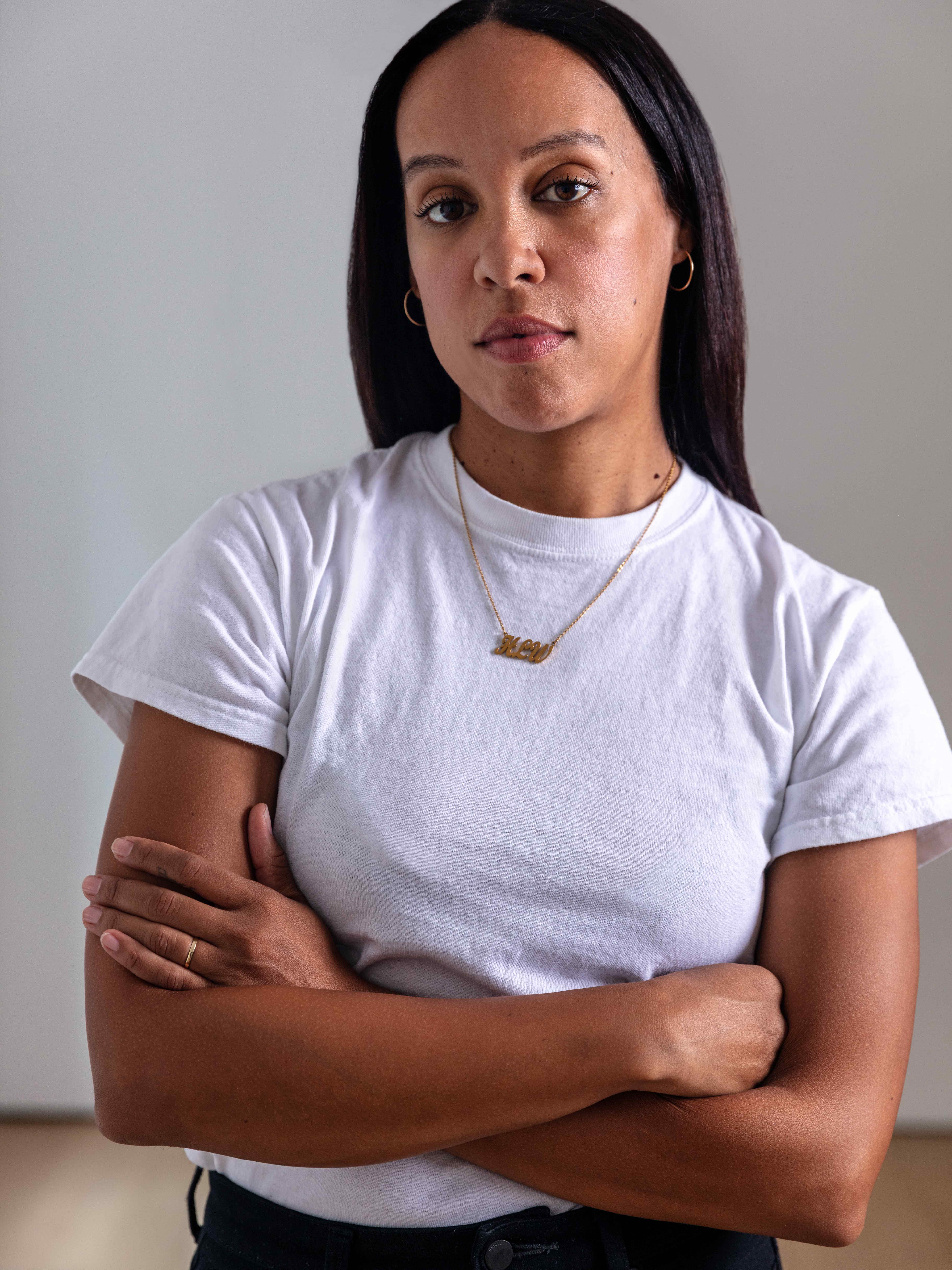
Last summer, Ebony L. Haynes felt like it was time for a change. She’d spent years building her career as a dealer, most recently doing double duty as both director of contemporary art gallery Martos and its edgy offshoot project space, Shoot the Lobster. Like so many people grappling with the pandemic—along with a growing social justice movement—she felt as though “the stake in the art world for me had changed a lot,” she told Artnet News.
At the time, Haynes had already been approached by a few big-name galleries, including David Zwirner, about taking a sales director position. With her sights set on an even bigger shift, she took the opportunity to pitch Zwirner a fresh idea for an art space: a cross between a commercial gallery and a kunsthalle that would allow artists, visitors, and staff alike to slow down, experiment, and really consider challenging art.
Before long, what started as an offer to sign on to his team in a traditional role turned into “a much more ambitious idea,” David Zwirner said in a statement.
That idea has now become reality in the form of 52 Walker, which opens in October and takes its name from its location to honor the artist-run spaces that were once signature in Tribeca.
The inaugural show is a solo presentation of work by the Los Angeles-based multidisciplinary artist Kandis Williams. Fresh off her first institutional exhibition at the Institute for Contemporary Art at Virginia Commonwealth University, which was a deep dive into systems of exploitative labor, the 52 Walker show marks Williams’s solo debut in New York.
installation image, “Kandis Williams: A Field” at the Institute for Contemporary Art at Virginia Commonwealth University, 2020. Photo: David Hale.
True to Haynes’s desire to, as she put it, “change the model and slow things down,” the first calendar year of programming, in 2022, will include only four additional solo shows. They are, in order, L.A.-based sculptor and installation artist Nikita Gale; Amsterdam-based performance artist Nora Turato; Philadelphia-based conceptual artist Tiona Nekkia McClodden; and Canadian assemblage artist Tau Lewis.
Deeply considered and conceptual, each of these artists makes work that is difficult to categorize and nearly impossible to capture in an Instagram post. For Haynes, who has worked with most of them before, that is a big part of the draw. Each show will last three months, a run more reminiscent of a kunsthalle than a commercial gallery, which traditionally cycles through shows every four to six weeks.
The duration of exhibitions won’t be the only way in which Haynes works toward a less ephemeral model. She will also capitalize on David Zwirner’s growing publishing arm—an operation more commonly attached to blue-chip outfits nowadays—to work with each artist on an exhibition catalogue. The series, called “Clarion,” serves as “another testament to the space and what I really want to give to the artists,” Haynes said.
Installation view of Nora Turato’s What Did You Make of This Did You Make This Up (2020) Photo: Paul Schöpfer. Courtesy Sammlung Philara and Private Collection Basel.
Haynes plans to pursue more programming like the ambitious projects that made her name, such as the critically lauded “Ebsploitation,” a group show at Martos examining the tropes of Blaxploitation films, and the more intimate “epigenetic,” a two-person exhibition at Shoot the Lobster that she spent almost a year brainstorming with breakout artists Carolyn Lazard and Juliana Huxtable.
Instead of having to wear multiple hats this time around, however, Haynes will be able to amp up her impact with a dedicated team and the financial support of a mega-gallery behind her (a message that often gets lost when the focus is put on her hiring an all-Black staff, a move that reflects her career-long commitment to creating better access for Black arts workers).
As she did at Shoot the Lobster, Haynes plans to work with artists without any “expectation for anything beyond our show together,” she said. 52 Walker will not represent artists, and those who show there will not be represented by any of David Zwirner’s other galleries, either. Haynes considers 52 Walker “a place of discovery for a lot of galleries and curators and a chance for them to almost have long studio visits with [artists].”
Exterior of 52 Walker. Photo: 52 Walker.
52 Walker will occupy the first floor of the five-story building remodeled by architect Annabelle Selldorf. (Design-wise, the space itself won’t veer too far from the Zwirner brand; Selldorf has overseen the construction of his other gallery locations in New York and London.)
Work in the shows will be for sale (just don’t expect to see 52 Walker at an art fair near you; the gallery won’t be participating in any). Haynes hopes that the atmosphere she creates will enable her to bring in “clients who maybe felt that they couldn’t be a part of the conversation here—which often happens with a mega-gallery.”
In this way, the space is “an extension of David Zwirner,” Haynes noted, “but it has a different name and aesthetic because of this new model.”